Frites/Frietjes
Anyone can cut up a potato. The skill comes in getting the chip mega crispy on the outside, not too oily, and super-fluffy in the middle.

The Essentials
2kg Maris Piper potatoes
500ml to 1l Sunflower oil
Heavy-bottom, deep pan or electric fryer
Metal slotted spoon or metal sieve
Tip 1. Get the right spud
Jamie Oliver, the Hairy Bikers, and the British Potato Council all recommend using Maris Piper potatoes for your frites. Heston Blumenthal has to go one step further and has decided Belle de Fontenay is the potato of choice. Both are floury potatoes that don't hold water and, when cooked, are fluffy in the middle. On the other hand, a waxy potato, like a Charlotte, holds more water and retains its 'bite', making them better for boiling.
Tip 2. Make sure you rinse
The Hairy Bikers are prepared to invest time in the humble chip and want you to soak them overnight in cold water. However, celebrated chef and restaurateur, Mark Hix (of Hix restaurants), says it is imperative to rinse your potatoes once you have cut them into chips.
Rinsing them in cold water washes away the starch and "will help the chips cook evenly and not colour too quickly as well as ensuring a crispy exterior", according to Guardian food writer, Felicity Cloake. Pat them dry before you fry.
Tip 3. The oil
Jamie Oliver recommends using beef tallow, or goose or duck fat, but that might be difficult to get hold of right now and is not vegetarian or vegan friendly. Heston Blumenthal's chosen fryer fat is groundnut oil "as it is very pure and odour-free". The Hairy Bikers favour sunflower oil, and Jamie Oliver concedes that sunflower oil is his go to option as it's cheap and efficient.
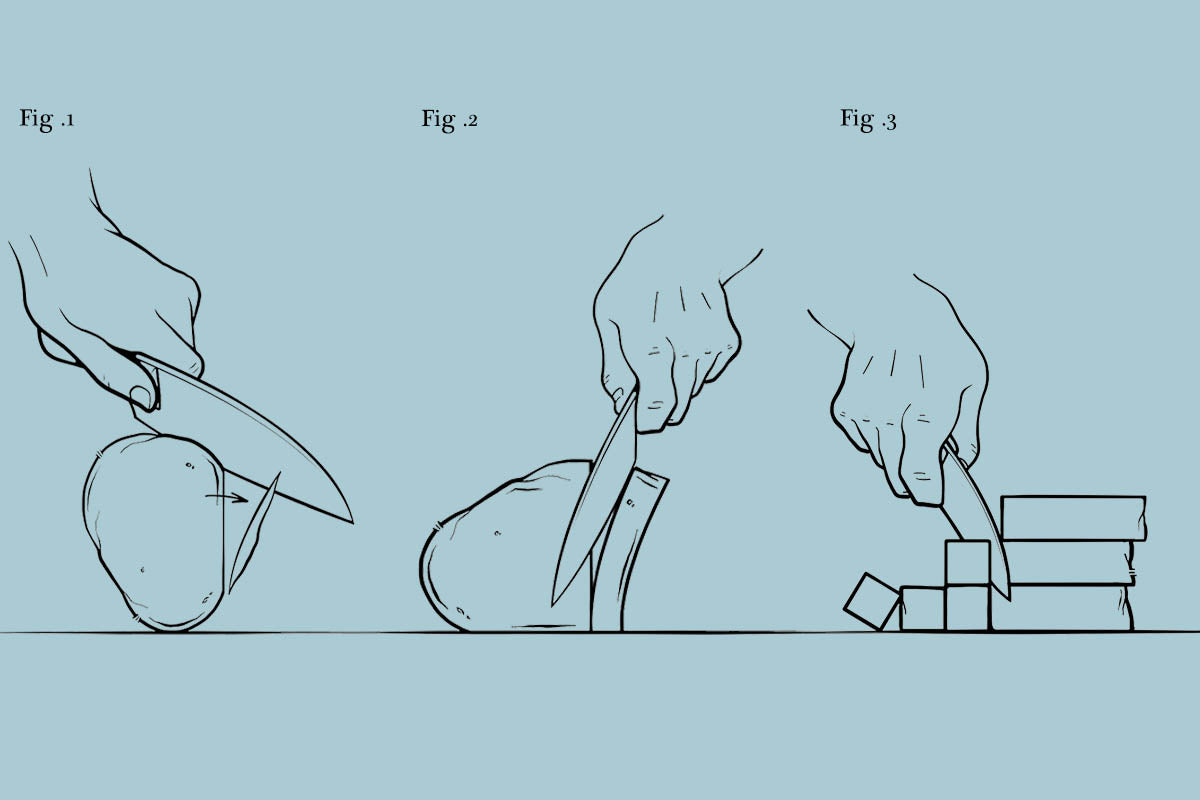
Tip 4. How to cut
- Using a chef's knife, place the potato on its side and cut off a thin slice down the longest side.
- Roll the potato over — you now have a flat base to work from.
- Make 1cm wide marks on your potato so you work out where you're cutting, then cut the potato into slabs. This is where a chef's knife comes into its own.
- Stack up your slabs and then cut 1cm wide sticks.
- Keep your chips cool in the fridge or water once cut to avoid browning.
Tip 5. The Fry
The Guardian’s food writer, Felicity Cloake, says it is key you don’t crowd the pan. You may need to fry the chips in two or three batches. Secondly, the best results come when you double fry.
- Fill a heavy-bottomed saucepan half-full of the sunflower oil. Never fill it more than half. Jamie Oliver recommends your oil should be 8cm deep.
- Heat the oil to 130°c, lower in your chips with a slotted metal spoon or metal sieve. Cook for 8-10 minutes and allow to drain on kitchen paper.
- When you are ready to serve, heat the same oil back up to 180°c and put your chips back in. Cook for 4 minutes or until golden brown.
- Place in a bowl lined with kitchen paper.
Fritessaus/Mayo
Fritessaus/Mayo
The sauce on top is almost as important as the frites themselves, with a huge range offered at most fritures (places that make fries, and little else). Mayonnaise is the classic topping, although many Belgians love andalouse — a blend of mayo, tomato paste, and peppers mixed together.
Ingredients
1 egg yolk
1 big pinch salt
1 tbsp Dijon mustard
1 tbsp white wine or or lemon juice
250ml sunflower oil
25ml extra virgin olive or rapeseed oil
Makes 300ml
Whilst many chefs claim mayonnaise is simple to make, simple should not be mistaken for easy, so be prepared to work hard!
Tip 1. Get your ingredients ready
You need to work quickly and keep the mixture moving to avoid splitting. If you keep your eggs in the fridge, take them out 30 minutes before you want to make your mayo. Weigh out the ingredients and have your whisks ready.
Tip 2. Use a tea towel
Celebrity chef, Michelle Roux, advocates using a damp cloth or tea towel to anchor your bowl and stop it slipping whilst you're furiously whisking.

Tip 3. Use a stick blender to save time
Note: You need to whisk by hand for the last step of the stick blender method.
Start by putting all the ingredients apart from the extra virgin olive oil in a jug and blend in 10 second bursts on high power until everything is combined and the mixture starts to emulsify. Then get your hand whisk out and beat in olive oil, a little at a time.
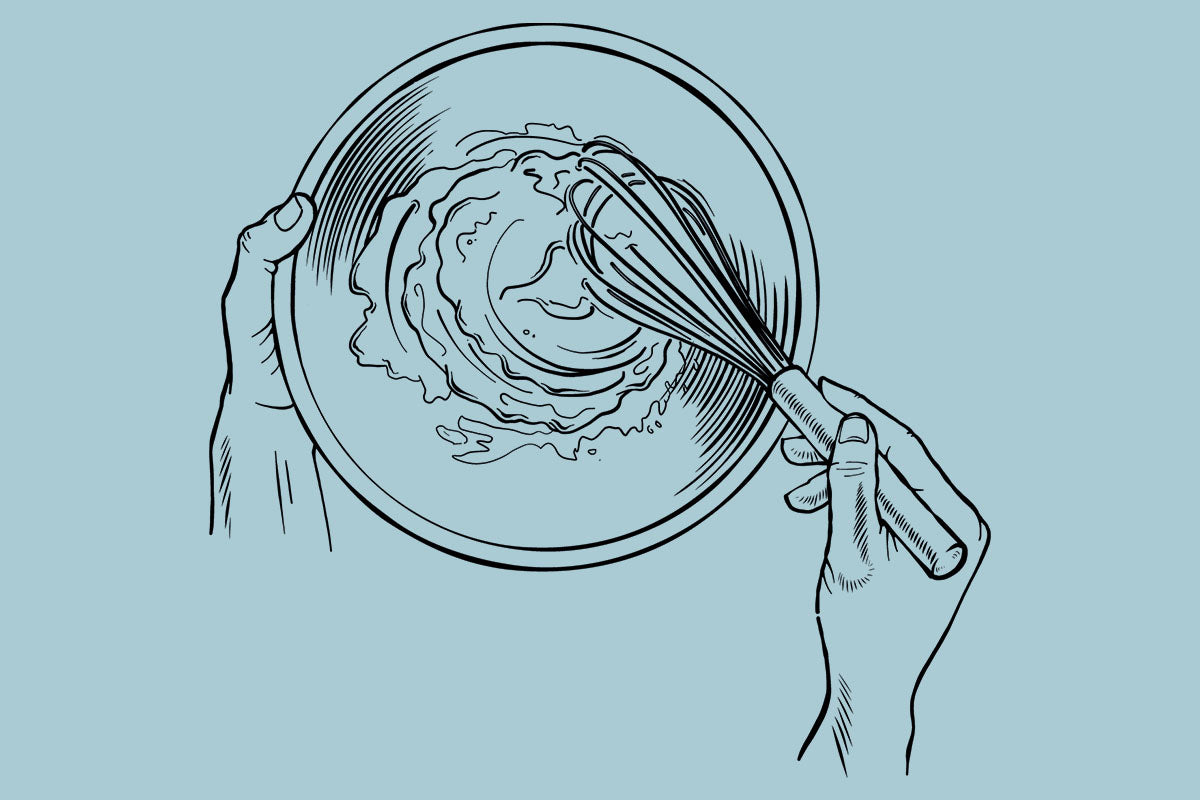
Traditional hand whisk method
- In a bowl, whisk the egg yolk with a little salt for 30 seconds. Add mustard and vinegar or lemon juice, and whisk for 30 seconds.
- Begin slowly incorporating sunflower oil or groundnut oil. Don’t be tempted to use olive oil — you need a neutral oil.
- Whisk and whisk until smooth and incorporated. This will take up to five minutes. If it is too thick, add a little water.
- If the mixture starts to split, whisk in an additional egg yolk in a separate bowl, then incorporate into your split mixture.
- Finish by whisking in the olive oil
Gaufre/Waffel
Stalls around the country offer any number of toppings, but the classics tend to be whipped cream, Nutella, or fresh fruit. Locals will tell you that there is no single kind of waffle identified as strictly "Belgian"—instead you'll find various types including the Brussels waffle, the Bergische waffle, and the Liège waffle.
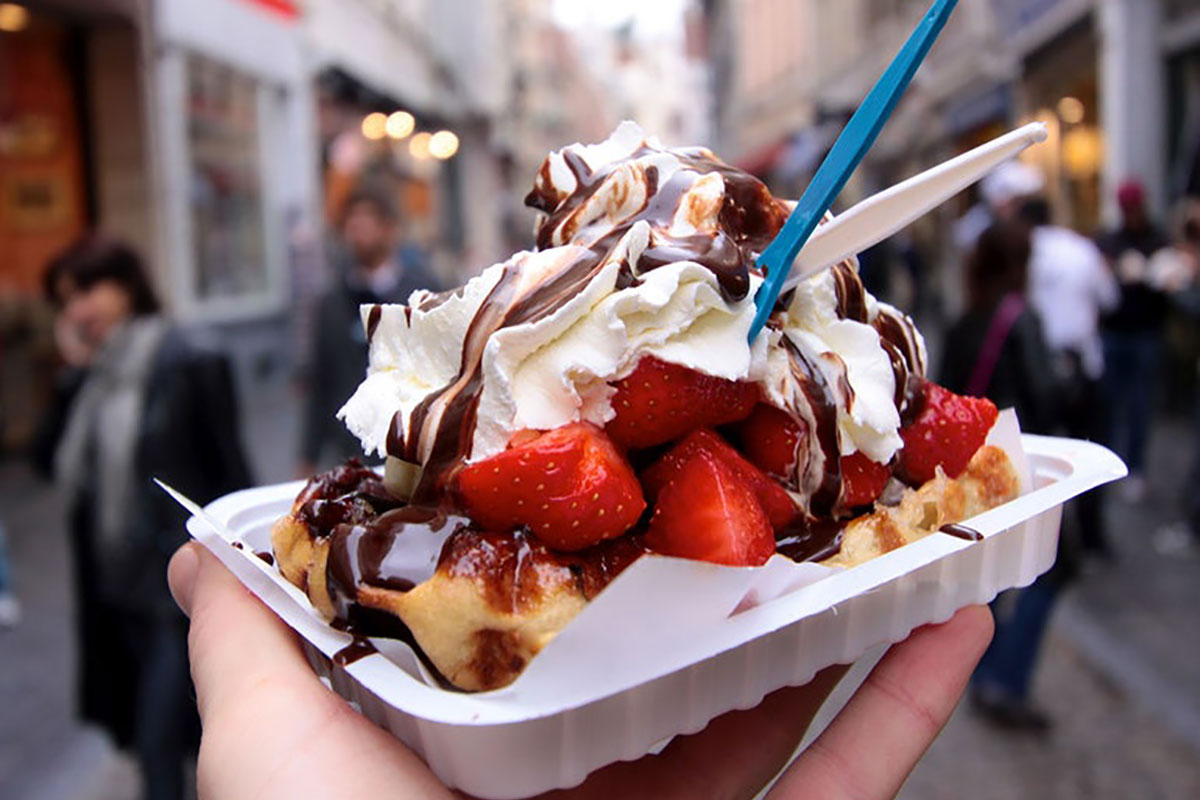
In Liège, they’re often served plain, instead adding pearl sugar into the batter, which partially melts when it meets the griddle. The Belgian royal family is known to be especially partial to Liège waffles — particularly from the pastry shop Patisserie Eggenols.

Ingredients
240ml of full fat milk or buttermilk mix
1 tbsp active dried yeast
1 tbsp soft light brown sugar or caster sugar
260g plain flour
1/2 tsp salt
6 tbsp melted butter
1 large egg, beaten
Oil, to grease
Waffles are usually cooked in a waffle iron, but if you don't have one, don't worry — you can use a griddle pan instead.
Don’t use a cheese toastie maker — we tried it and the grooves are too deep and it takes too long to cook. You’ll end up with a raw middle or a burnt outside.
Tip 1. The Flemish Mix
Belgian food writer, Ruth Van Waerebeek, author of A Taste of Belgian, doesn’t add buttermilk in her Flemish waffle recipe. However, most Belgian waffle batters call for buttermilk as it adds a slight tang. Both Nigella Lawson and chef-turned-broadcaster, James Martin, use just full fat milk in their mixes.
Guardian food writer, Felicity Cloake, uses 180ml milk and 240ml buttermilk in her recipe.
Tip 2. Yeast and rest
Belgians were eating waffles long before the invention of rising agents like baking powder. Their waffles get their fluffiness from yeast. Make sure you allow at least 30 minutes to let the yeast do its thing and develop bubbles, or stand overnight if you can wait that long!
Tip 3. Hot! Hot! Hot!
You need to use a neutral oil like sunflower oil to cook your waffles, and get the waffle iron or griddle pan hot before you start. If the heat is low, you'll end up with a soggy and un-crispy square.
Tip 4. You can store your batter
Batter will keep for up to 48 hours. If you don’t plan to make 10 waffles in one go, you can put your batter back in the fridge and let it sit and rise, ready for the next day.
Tip 5. How to cook in a griddle pan
Griddle pans have raised lines, which create grooves in your waffles that your chocolate or cream can pool in. Yum!
Get the pan nice and hot. Sprinkle a few drops of water on the pan to test the heat; if the water dances, you're ready to roll.
Add a very small amount of oil (you can use butter).
Add in your batter and allow it to spread out around the whole pan. You can also dollop in the batter if you want to make small, bite-size waffles.
Turn the hob down to a medium heat and cook the waffle for 4–6 minutes on both sides.
Slide it out onto a plate and cut into quarters.

How to make waffle batter
- Melt the butter in the microwave or a pan.
- In a jug or small bowl, warm the milk and stir in the yeast with a pinch of sugar, then cover and allow bubbles to develop.
- In a separate bowl, add all the dry ingredients and mix together. Whisk in the egg and melted butter to the milk, then slowly incorporate it into the dry ingredients until you have your batter.
- Cover the batter and let it rest at room temperature for 30 minutes or longer in the fridge.
- When you are ready to cook, turn on your waffle iron and spoon in the mixture.
- Serve with your favourite topping, such as Nutella, cream, strawberries, syrup, or sugar.
Discover more inspiration on our journal
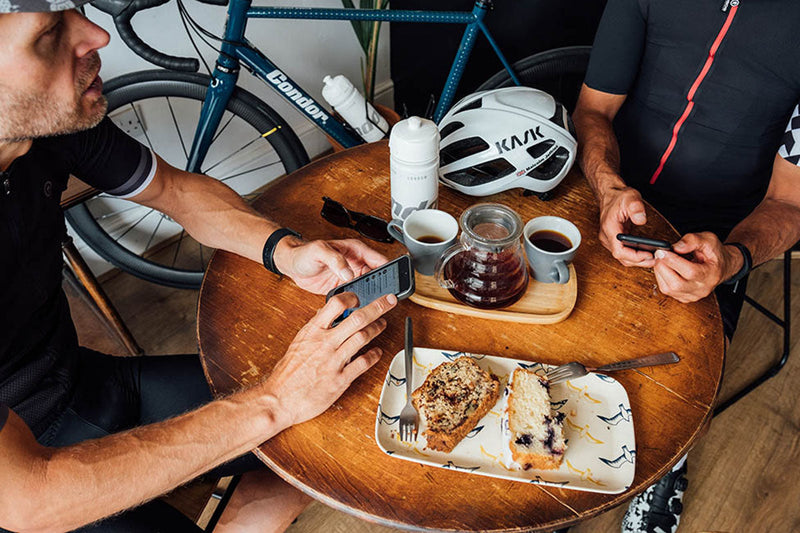
Cycling cafe stop recipes and three ingredient cakes
No flour, no problem! We've assembled, tried and tested the best bakes, cakes and cookies to make a home. Try a gooey three-ingredient chocolate cake or a no flour almond cookies and classic flapjacks.
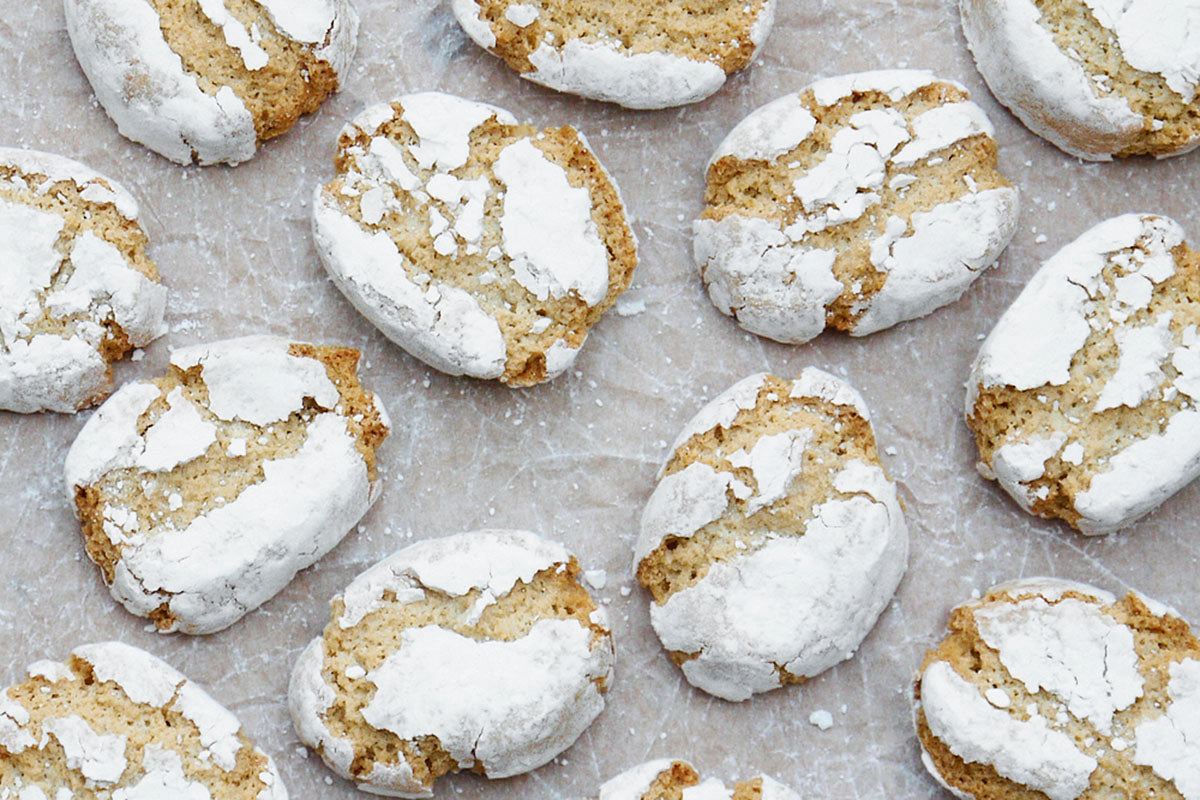

Northern Classics Lingo: 10 phrases and words you'll hear at Belgian's top races
Belgian basics you need in your repertoire during the Classics season.
